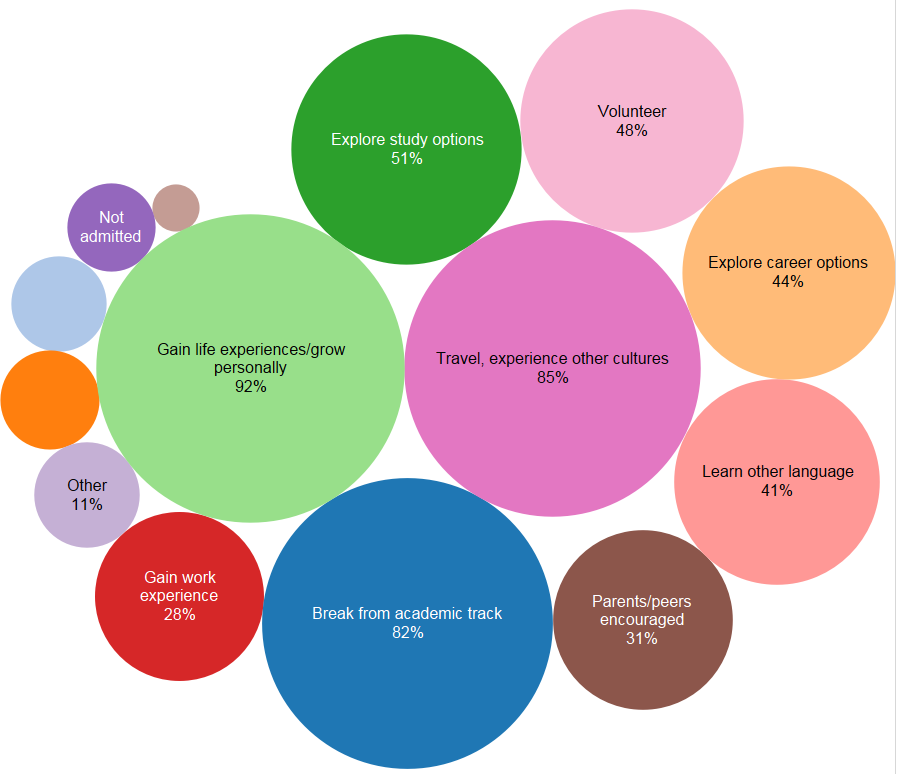I came across an article, and wanted to pass it along!
It’s not all bad; it’s also not all good.

I came across an article, and wanted to pass it along!
It’s not all bad; it’s also not all good.

 Over the past few years, the percentage of 25-to-34-year-old Americans living with their parents has been at a record high of nearly 15%. Student debt and difficulty finding a job are sending millennials back home in droves — and though this type of arrangement is certainly easier on the wallet, it can wreak havoc on a young adult’s self-image.
Over the past few years, the percentage of 25-to-34-year-old Americans living with their parents has been at a record high of nearly 15%. Student debt and difficulty finding a job are sending millennials back home in droves — and though this type of arrangement is certainly easier on the wallet, it can wreak havoc on a young adult’s self-image.
Here is the full article.
I don’t really agree with everything in the article. The article is not based upon research, but it based upon three women’s experiences. However, I do know that emerging adults have varied and complex emotions when moving back home which is partially due to societal pressure, and their desire to feel like an “adult.”
Research indicates that most parents and emerging adults enjoy their time spent at home. In his book, Arnett says, “When kids boomerang home, they bring more pleasure than pain. (Arnett, xi) The book also says that “Of the parents who have an emerging adult child living with them, 61 percent describe their feelings about it as “mostly positive” and only 6 percent describe the experience as “mostly negative.”
For this reason, it is important we redefine adulthood according to the three developmental tasks rather than where you sleep at night.
Resources:
Getting to 30 by Jeffrey Arnett and Fishel
According to research, “40% of 18 to 34 year olds are living at home with one parent or both. Looking at the younger, 18-to 24 year-old group, more than half have moved back home, at least for a time, in the past few years- or never moved out. Ther percentage is about the same for men and women. (Arnett, Getting them to 30, 109)
In a society where more emerging adults are living at home, adulthood cannot be based upon markers such as living independently, but upon the deeper Biblical principles of Vocation, Autonomy, and Community.
While living at home still carries a negative stigma in many social circles, living at home is not always a negative experience – for the child or the parent. “Almost 70% of young people 18-34 who are living at home with their parents say they are very satisfied with family life.” (Arnett, 110)
In this video, the speaker makes several points to illustrate the difference between someone who lives with parents as an adult versus someone who lives at home with an immature perspective.
Here is a link to the full video.
The video states that those who live at home as a Child…
Those who live at home as an Adult…
While the fact that you are living with your parents does not make you a child, how you act while living at home does indicate your maturity.
One of the first points made in the video is that there are several healthy reasons why children choose to live with their parents (including finances and physical health). While the predominant western mindset values living independently, many cultures have always valued communal living for extended families.
So are you living at home like an Adult or a Child?
Other Links:
I came across an article this week that focuses on the increase of women who are living at home. While the article focuses on the increase of women, the numbers of women and men living with their parents continues to increase.
We need to explore what this trend means for the church.

1. In a society where more emerging adults are living at home, adulthood cannot be based upon markers such as living independently, but upon the deeper Biblical principles of Vocation, Autonomy, and Community.
2. New boundaries must be established within the home when a child moves home to further rather than delay the child’s development. (Setting Boundaries While Living at Home)
3. We must avoid criticizing or shaming those who live at home. We must avoid criticizing or shaming parents who allow their children to live at home.
4. We must be prepared to counsel emerging adults as they decide where to live, and how it will affect their lives (spiritually, mentally, physically, and financially).
This is only scratching the surface of this issue. Please leave your thoughts below to further the discussion.
Other Links:
 Dr. G. David Boyd is the Managing Director of EA Resources, a non-profit that seeks to equip those who minister to emerging adults.
Dr. G. David Boyd is the Managing Director of EA Resources, a non-profit that seeks to equip those who minister to emerging adults.
Sapienta is an on-line resources that is sponsored by Trinity International University that focuses on research on emerging adulthood. Jana Sundene, co-author of Shaping the Journey of Emerging Adults, wrote this great article concerning the affect of digital communication upon the empathy skills of emerging adults. In this article, Jana conveys displays two things I love: a passion for emerging adults, and a positive perspective towards their impact upon the future of the church. Here is the article…
 It seems like every time I turn around I am hearing something about Sherry Turkle’s new book, Reclaiming Conversation: The Power of Talk in a Digital Age.Whether it is an interview, a podcast, an article or a review, this book appears to have hit a nerve with the general public.
It seems like every time I turn around I am hearing something about Sherry Turkle’s new book, Reclaiming Conversation: The Power of Talk in a Digital Age.Whether it is an interview, a podcast, an article or a review, this book appears to have hit a nerve with the general public.
Indeed, concern about how electronic devices and social media are affecting our relationships has been growing. I know it’s not just the older generations because very time I bring up this as a topic of discussion with the emerging adults in my college courses, the classroom lights up with comments and opinions.
Click here for the full article.
Here are some highlight quotes:
So next time you find yourself in a situation with an emerging adult, give them the gift of presence. After bestowing this precious gift, don’t expect or demand that it to be fully repaid. Like other acts of giving, it should spring from an over-flowing heart, and lead by the tug of the Spirit.
Dr. G. David Boyd is the Managing Director of EA Resources.
 I’m going to say something a bit unheard of in modern times. My thoughts are anathema for most parents. But I’m done pretending.
I’m going to say something a bit unheard of in modern times. My thoughts are anathema for most parents. But I’m done pretending.
Here goes …
I don’t care where my children go to college. Continue reading

© 2006 Will Ellis, Flickr | CC-BY | via Wylio
The American Gap Association is a great resource for those taking a Gap Year.
They have compiled a great FREE guide on how to plan a gap year.
You can download their guide Here!
For a Christian perspective on Gap Years, please check out “God in the Gap Year” by Derek Melby. You can download this resources here.
This article is a list of statistics that are taken from various studies about the benefits of a gap year. The article also gives this image which explains the reasons why students choose to participate in a gap year.

Here are some of the stats that caught my attention.
Please note: There is currently a huge need for research and statistics among Gap Year Participants. Many of the studies listed were not conducted on American students, and did not have a large subject base.
While Gap Years are not for everyone, they definitely have benefits. If you are considering a gap year, here is an article to get you started.
 Taking a “Gap Year” after high school is becoming more common in the Western world. While exact details are difficult to determine, but it is clear that interest and enrollment in gap year programs is growing substantially. If you want to read some statistics on Gap Year, Please check out this site.
Taking a “Gap Year” after high school is becoming more common in the Western world. While exact details are difficult to determine, but it is clear that interest and enrollment in gap year programs is growing substantially. If you want to read some statistics on Gap Year, Please check out this site.
Over the next couple of weeks, I will be posting information and articles on this topic. I am also compiling a list of resources for those considering a gap year.
I came across this article on Forbes that I wanted to share with you.

© 2015 GotCredit, Flickr | CC-BY | via Wylio
When I was going through college, there would be a salesperson outside our cafeteria everyday trying to get us to register for a credit card. In return for signing our name, we would receive a free t-shirt, a 2-liter of soda (usually Mountain Dew), or a $10 gift card for pizza. Preying upon the innocent, their tactics were shady, and their persistence was relentless.
The Credit Card Act of 2009 eliminated excessive marketing of credit cards to young people. It prohibits companies from wooing students with T-shirts, free pizza and other free gifts at university-sponsored events. This legislative act also requires those under the age of 21 to prove they have an independent income before applying for a credit card.
In spite of these safety provisions, emerging adults are racking up more debt than ever before. Here are a few statistics:
Please Note: These numbers only reflect their amount of credit card debt. We haven’t even mentioned the average amount of educational debt which is more than 35k. (Source) Overwhelmed by this burden, many college students do not even know their current student loan balance. (Source)
As someone who cares about emerging adults, it is time to begin discussing…
In our discussions, we must acknowledge that debt is not a problem of emerging adults, but is an epidemic that affects Christians of all ages.
Maybe the whole problem is that emerging adults have learned from watching us, and our inability to respond to consumerism.
Leave a comment below to express your thoughts or leave a link to a resources on finances.
Financial Resources:
 Dr. G. David Boyd is the Founder and Managing Director of EA Resources, a non-profit designed to equip parents and churches to minister to emerging adults.
Dr. G. David Boyd is the Founder and Managing Director of EA Resources, a non-profit designed to equip parents and churches to minister to emerging adults.